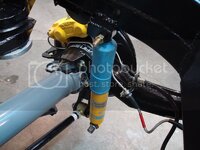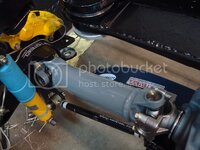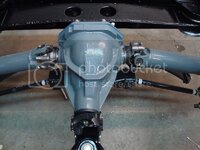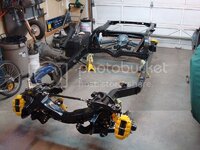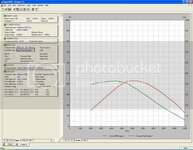Okay, this has probably been the closest call with these offset arms - I did my rear end alignment today, and I was almost screwed for life...
AND THIS IS DEFINITELY NOT DUE TO FRAME POCKET DAMAGE, MY FRAME POCKETS ARE IN PERFECT SHAPE. I aligned the entire rear end with the half shafts level. I dialed in each side for 0 camber and 0 toe in...I was almost on the brink of death with the right side - these arms obviously have some issues with them because they almost didn't fit for 0 toe-in. Maybe the arms were cocked when they were welded, who knows. Anyways, here is how I did it (Mike Dyer taught me this method over the phone...pure genius, thanks Mike:thumbs

. It is much more accurate than using a meter stick to do a rough alignment - this method is a thousand times more accurate, because it uses the entire frame rail to dial in the toe-in measurements...not just a tiny section of the frame rail.
The first thing I did was level off the frame. I used cardboard underneath the jack stands to make the frame perfectly level.


The smart struts are designed to limit camber throughout travel. This can be both a good and a bad thing. I'm not planning on taking this car to the track, just street driving, so limiting the camber would be the way to go in my application. To do this, you need to turn the camber bolts so that they are on the bottom of the slots - the smart strut bracket goes up and down, not left to right like the stock one does. I did the left side first, then I attempted to turn the camber bolts on the right side, and then snap:cuss:banghead:...

The son of a b8tch cracked in half, so the only choice I had left was to use one of my old camber bolts and washers. The original washers are different than the ones that came with my smart struts (they only had one flat on them) So I had to use an entire bolt assembly from my old struts.




Not the best option, but I'm not waiting on stupid parts anymore...nothing ever goes smooth with this stupid rebuild, I'm at my wits end with this project 1 step forward, then 30 steps back. Most of the time its because parts do not fit, and I then have to reengineer them to make them work. Okay now that I have vented, on with the alignment. After you torque the strut rod camber bolts, you are now ready to do the alignment. Take an old rotor and install it backwards on the lug studs...

Raise the arm using a jack underneath the backwards rotor, so that the half shaft is perfectly level - use a small level for this. Once you get the half shaft level, dial in the camber so it is 0 (use a 2 foot level on the rotor pointing up to the roof) - get the bubble centered for zero camber.
Now, tie a piece of string to the area where the spring bolts go, wrap it around the back of the rotor, and then tie it to something heavy that you can move while dialing in the suspension - a jackstand would work well for this application, but I didn't have an extra one, so I just used a bicycle stand I found in the garage.


Now, here is the trick to this method. You want to move the stand you have the string tied to so that it just touches the fact of the rotor. Imagine you are trying to build a fence and this is your plumb line, or a massive ruler if you will. If you placed a meter stick on the face of the rotor, you can measur e the distance to the frame rails in two positions, but these positions would be relatively close together because the meter stick can only reach out so far. The string method allows you to measure an area at the front of the rail, and an area at the rear of the rail, you subtract these two numbers and end up with you spec. Make sure the section of frame rail you are working with is straight. If it isn't, you could always rig something up to the body mount cages to use as a straight line reference point. Contrary to what my pictures show, my frame is not perfect - in fact, the right frame rail had a huge dent in it which I removed and welded in new metal...but it still isn't perfect. So, I had to be careful when I did the toe-in on the right side of the frame, because it is a little "wonky" on the outboard side. Here you can see the two points I chose to measure from while doing the alignment - I used tape to mark them off. You only need two points.

Measurement at the front of the frame rail (after tweaking the trailing arm shims)

Measurement at the rear of the frame rail (after tweaking the trailing arm shims):

You want the measurements at both points to be the same - this means that you have zero toe-in and the rotor is perfectly in line with the chassis' frame. I don't trust alignment shops - I can do it myself and know exactly how well the job was done. Oh, and in regards to what my shims ended up looking like on both sides, here are two pics.
Left Side:

Right Side:

Now you tell me - how lucky was I with the shims on the right side of the frame? I am going to do two more alignments just to make sure I'm safe on the right side, because if it turns out that my measurements were wrong, well then guess what? That means my aftermarket trailing arms were welded incorrectly and they are not straight. If I have to pull this trailing arm off the chassis again, I'm going to go into denial. I suggest you boys stick with the stock arms and avoid the hassle I have gone through with these arms - it just isn't worth it. If I would have known I was going to run into all these issues, I would have stuck with the stock arms...live and learn I guess.
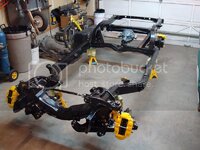
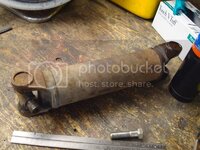
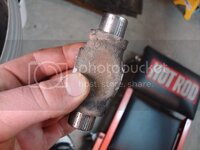
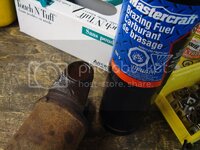
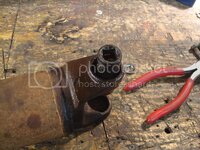
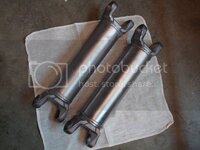
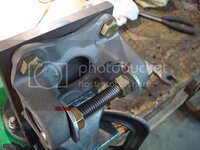
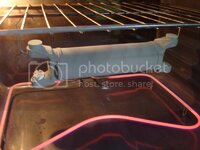
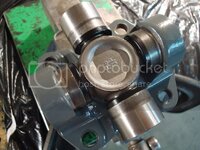
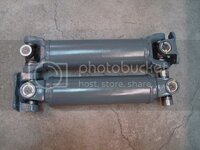

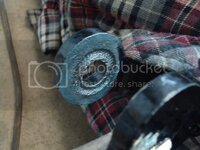
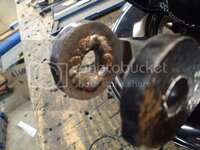
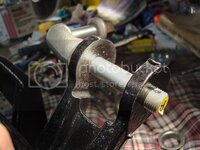
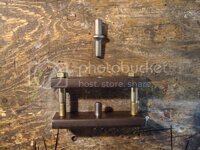
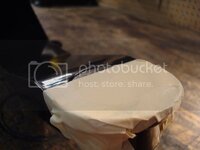
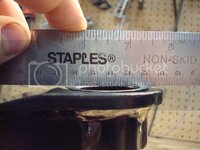
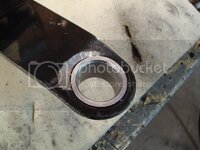
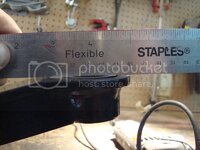
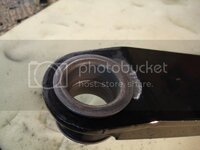
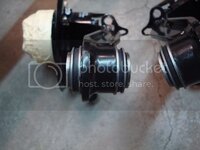
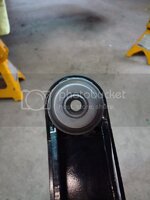
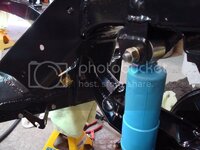 \
\